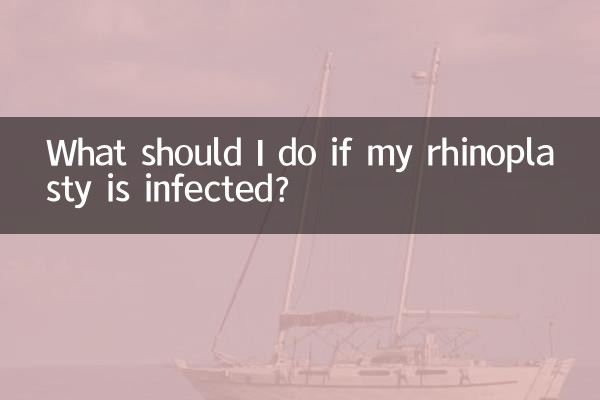What should I do if my rhinoplasty is infected?
Rhinoplasty surgery is one of the most popular plastic surgery projects in recent years, but postoperative infection is one of the biggest concerns for beauty seekers. How to deal with infection after rhinoplasty surgery? The following is a summary of hot topics and hot content on the Internet in the past 10 days, hoping to help everyone better deal with this problem.
1. Common symptoms of rhinoplasty infection

Rhinoplasty infection is usually accompanied by the following symptoms. If the following conditions occur, you should seek medical treatment in time:
| symptom | describe |
|---|---|
| Redness and swelling | Postoperative local redness and swelling continue to worsen, accompanied by pain |
| fever | Increased body temperature, possibly accompanied by general discomfort |
| secretions | Purulent discharge or odor at the wound |
| increased pain | Postoperative pain did not subside but continued to worsen. |
2. Causes of rhinoplasty infection
Rhinoplasty infection may be caused by many factors. The following are the main reasons mentioned in popular discussions in the past 10 days:
| reason | Detailed description |
|---|---|
| Irregular surgical operation | The doctor is not skilled or the disinfection is not thorough |
| Improper post-operative care | Failure to keep the wound clean as directed by the doctor or exposing it to water too early |
| Implant rejection | The body rejects the prosthetic material |
| low immunity | After surgery, the body’s resistance decreases, which can easily lead to infection. |
3. Treatment of rhinoplasty infection
If infection occurs after rhinoplasty surgery, the following measures should be taken promptly:
| Processing steps | Specific operations |
|---|---|
| seek medical attention immediately | Contact the surgeon or go to a regular hospital for treatment |
| antibiotic treatment | Use oral or intravenous antibiotics as recommended by your doctor |
| Wound cleaning | The doctor may clean the wound and drain the pus |
| Prosthesis removal | If the infection is severe, the prosthesis may need to be temporarily removed |
4. How to prevent rhinoplasty infection
Prevention is better than cure. Here are the preventive measures mentioned in popular content in the past 10 days:
| Precautions | Detailed description |
|---|---|
| Choose a regular hospital | Ensure that the surgical environment and doctor qualifications meet standards |
| Strict post-operative care | Follow doctor’s advice to keep the wound clean and avoid getting wet |
| Enhance immunity | Pay attention to rest and nutritional supplements after surgery |
| Regular review | Follow-up visits on time to detect potential problems in a timely manner |
5. Common misunderstandings about rhinoplasty infection
In the hot discussions in the past 10 days, many people have the following misunderstandings about rhinoplasty infection:
| Misunderstanding | the truth |
|---|---|
| Can be solved by self-medication | The infection requires professional treatment. Self-medication may delay the condition. |
| No need to worry about minor infections | Minor infections can develop into serious problems |
| The prosthesis must be removed | Not all infections require implant removal |
6. Summary
Although infection after rhinoplasty surgery is worrisome, most cases can be effectively controlled as long as you seek medical attention promptly and take the correct treatment measures. Choosing a regular hospital and taking strict postoperative care are the keys to preventing infection. If symptoms of infection appear, do not delay and contact your doctor as soon as possible.
Finally, I would like to remind everyone that plastic surgery requires caution and post-operative care is equally important. I hope that every beauty seeker can become beautiful safely and stay away from the risk of infection!

check the details

check the details